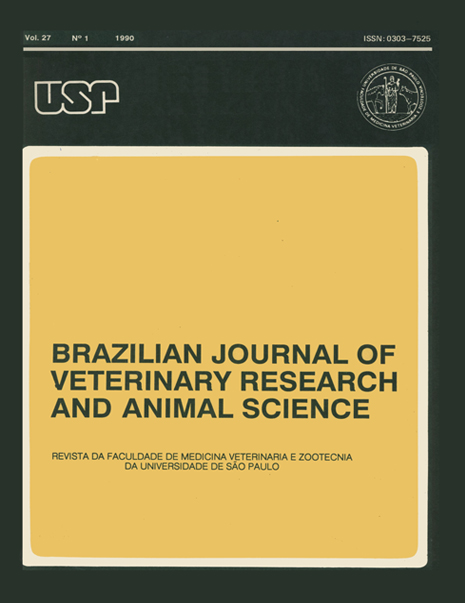The importance of the physicochemical examination for the differentiation of the yellowness of the swine carcasses in the routine meat inspection service
DOI:
https://doi.org/10.11606/issn.0000-0000.27147-51Keywords:
Swine, Heat inspection, Icterus, Yellow fat diseaseAbstract
Yellowness is a color alteration that can bring to the arrestment of the carcasses. In a sampling of 185 swine carcasses showing yellowness at inspection, without any other evident lesion, two confirmative procedures were made: cooling and the REMINGTON-FOURRI6 examination. The results showed that 158 carcasses remained ‘'yellow" following the cooling treatment, while 118 carcasses were considered icteric after the Remington-Fourrife examination. This shows the efficiency of the second test in confirming icterus in carcasses. Considering these results, a routine physicochemical examination is recommended.Downloads
Download data is not yet available.
Downloads
Published
1990-06-01
Issue
Section
PREVENTIVE VETERINARY MEDICINE
License
The journal content is authorized under the Creative Commons BY-NC-SA license (summary of the license: https://
How to Cite
1.
Ribeiro P, Anjos AC dos, Alavares AG de O, Fessel LJ. The importance of the physicochemical examination for the differentiation of the yellowness of the swine carcasses in the routine meat inspection service. Braz. J. Vet. Res. Anim. Sci. [Internet]. 1990 Jun. 1 [cited 2024 Apr. 19];27(1):47-51. Available from: https://revistas.usp.br/bjvras/article/view/51836





